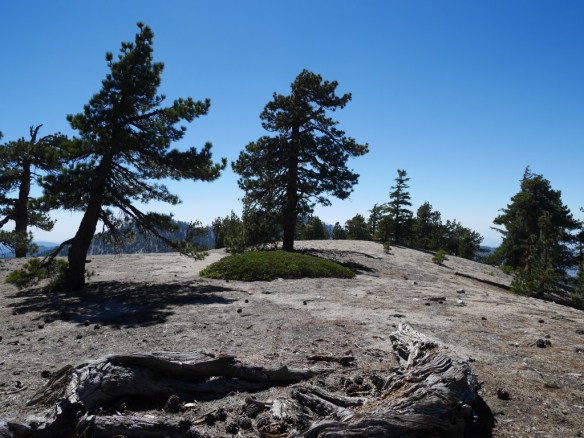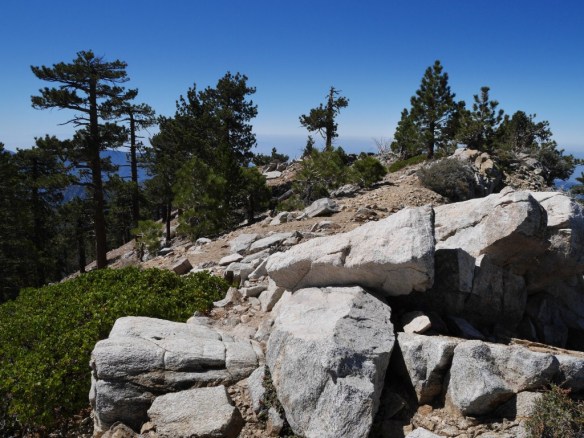My achilles tendon is almost healed and I expect to be hiking again by this weekend. It has been over a month since my last hike. Although my case of cabin fever is getting intense, I’ve decided to take it real slow and hopefully stop the barrage of injuries I’ve been dealing with over the past year. Since my IT band injury last August I’ve only hiked 1/2 the miles I hiked in 2011 (my first year of serious hiking) and 1/3 of what I did in 2012–both years injury free.
I think my impatience to get back into the shape I was in prior to getting injured has played a significant role in my continued battles with injuries. Long periods of inactivity have now resulted in my gaining back almost half the weight I’d lost since I started hiking. Looking honestly at where I’m at, I realize I need to get in shape to pursue getting in shape. It feels like I’m starting over–only worse. I’ve decided not to carry the extra weight backpacking requires for the rest of this year (though I may car-camp) and to also limit the strenuousness of my hikes (no matter how I feel) until sometime next year.
Frankly, this was demoralizing for me. However, my outlook got better as I started to plan my first return hike. There are a number of hikes I’ve avoided going on when I was training to hike Mt. Whitney or the High Sierra Trail because they would be too easy. Since I’m not going to get back into training mode until next year, it’s now a good time to explore them. A while ago my neighbor (Chuck) gave me the book “106 Tops In The Angeles Forest”. What’s great about it is that it shows a separate map with the trail (often un-maintained “use trails” that I don’t see on other maps) and a description on how to get to each peak–many of them un-named . There’s a plethora of options to get off the beaten path and explore trails most people don’t go on and many of them are short. I used that book as a reference to find my way to Pallett Mountain as both a day hike and an overnight backpacking trip this year and really enjoyed both experiences. A plan of exploration without worrying about mileage, gain, and getting ready for some other adventure has me looking forward to enjoyed the getting in shape to get in shape phase of my recovery.
My first hike back will be to Winston Peak and Winston Ridge (about 4 miles round trip). Since the book is over 30 years old and the trail isn’t on the maps I use for Angeles Forest, I felt I should search the internet and see what current information I could find. I came across the Iron Hiker blog which gave a good description. It’s blogger (Keith Winston) also has a link to something he refers to as his peak-bagging resume. I didn’t even know how many peaks I had summited. His resume got me curious to see what my list actually looks like.
Since I track my hikes on a spreadsheet, it was easy to determine that I’ve bagged 45 peaks. More interesting to me than the number is the variety of ways I’ve reached many of them–108 routes total. For example, I’ve hiked to Mt. Wilson twelve different ways starting from five different trailheads (Angeles Crest Highway at Shortcut Canyon, Chantry Flat, Cobb Estate, Eaton Cayon, and Sierra Madre). However, I’ve only blogged about one of them and I only have step by step instructions of another.
Although I repeat many of those routes often, some of them multiple times annually; it’s exploring new routes that I enjoy most. So, I thought a resume could be an effective way of sharing these routes through an outline with quick descriptions that could be helpful to others looking for other ways to explore the forest.
My Peak Bagging Resume is located in the Peak Bagging Routes tab in my blog’s menu area above. It’s a continuous scroll list, organized by peak in elevation order starting from the highest (to make quick work of finding high peaks for training), with descriptions of all the hikes I’ve done to each peak, and with links to other information including any step by step instructions I’ve created. At a minimum, each peak has a link to it’s own individual page that has photos from the peak and a list of hikes. Eventually, all of them will look like the one I’ve created for San Gabriel Peak that also has a 360 degree panorama view, links to posts I’ve created, and links to posts others have written on their blogs. Also on that resume page are links to alphabetical lists to make quickly finding information on a specific peak easier.

View from the “use trail” following the ridge from Inspiration Point looking toward Inspiration Peak (Unofficial Name), February 2012.
Like the trail segment pages I’ve created, I’ll use the quick reference nature of the resume to help me plan new routes. I hope others will do the same.







It might not be as strenuous as the High Sierra route but those little less visited peaks can be really enjoyable. I think the peak bagger resume is a great idea, I might also need to steal it! Hope your injury doesn’t keep you down for much longer.
LikeLiked by 1 person
Thanks, and you’re welcome to “steal” the resume idea. I really like how your maps work on your blog.
LikeLike
Kyle, best wishes that all goes well. Good plan to take it slow. Build up to your prior strength. It will come. We did Gobler’s Knob to Mill Creek Summit in May and I thought of you. Glad to know you’ll be back at it soon. Regards.
LikeLiked by 1 person
Thanks! I was in that area a few times just before and after you went. Unfortunately, when you were there, I was dealing with one of my injury time outs. Too bad I missed you.
LikeLike